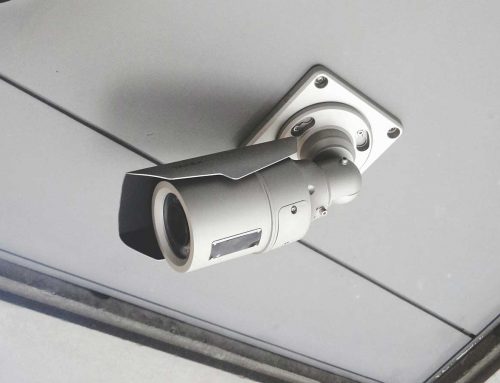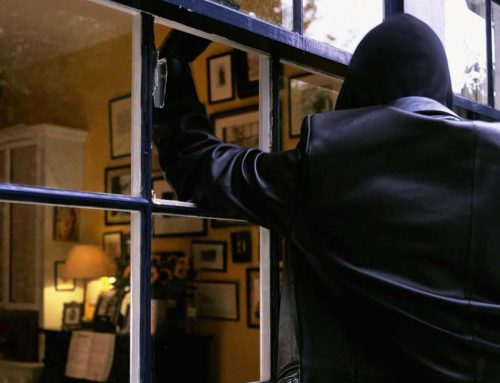Everyone knows or has at least heard the term CCTV security system. We are going to explain exactly what a CCTV security system entails and why you need a knowledgeable installer. If you do not already know CCTV is the accepted abbreviation for closed-circuit television, which basically means the cameras record footage and send it to specified viewing or recording devices. Closed-circuit security systems have come a long way since the grainy black and white images. These sophisticated systems need skilled installers for the correct fitting of cameras and other equipment. More and more choices have become available in the CCTC market. These choices come with abbreviations and terms that you might not be familiar with, which is why we have put together this guide. It is important to understand the options to know what will work best for your business or home.
The system that you chose must be the right one for your situation, there are factors that have to be considered. As an example, system application, potential environmental problems with coverage or installation are just some of the aspects to be looked at. The installer and the client need to consider these questions.
Get the right CCD Chip system
If you do not know what a CCD chip is, we are here to help with an explanation. CCD is the abbreviation for charge-coupled devices. CCD chips capture light. Light signals are converted to electrical signals. Electrical signals are then converted into video and image signals. Video signals are the result that you record on your DVR and watch on your monitor.
CCD chips are composed of circuits that have optical detectors and make use of semiconductors. Light signals from the CCD chip are converted to electrical signals by diodes. The brighter the light the more the electrical charge, these signals form pixels. These chips come in a variety of sizes.
Analogue or Digital?
Depending on your needs, you will have to decide between an analogue system or a digital system. Each one comes with its own set of pros and cons. We explain each one to you below.
Analogue
Signals from the system are sent as a single stream to one IP address with analogue systems. It makes them more efficient. The analogue system captures in analogue and sends data to a digital recorder. The analogue system is secure because it uses a cable to send the data to the recorder. Digital video recorders convert the data to digital compress and store it. You view the footage on a linked monitor, or over a shared network.
Digital IP Network Camera
Cameras still capture analogue signals with the digital system. Digital systems use cameras that have a built-in Internet Protocol or IP. The camera converts the signal into digital before sending it on to the Network video recorder. A signal is sent using a local area network (LAN) with an Ethernet cable. The preferred cable for this is a CAT5e.
The most obvious difference between analogue and digital is the quality, digital is clearer because of the high resolution. Network video recorders stream the digital footage over LAN and via the internet to allow you to view the footage remotely.
DSP Camera systems
Cameras that convert analogue to digital use a special chip called a DSP or digital signal processing chip. Digital signal processing cameras make use of a DSP chip which converts the analogue video signals to digital. Digital processing chip camera systems have better images that are more stable, sharper and brighter. Power efficiency is another benefit of the DSP system.
Camera connections and other cables
When installing a camera system, the quality of the equipment is vital, but that is not the only thing to consider. No matter how good the quality of the camera if you do not have the right cables and connections the system will not operate optimally.
Types of cables
Siamese coaxial cables:
As the name suggests these cables are made up of two cables. This kind of cable supplies the video signal as well as power. Siamese coaxial cables are also referred to as RG59 cables. One part of the cable supplies power from the power box to the camera, the second part of the cable transmits video from the camera to the DVR. For a quality connection, the power cable uses a connection known as BNC. The great benefit of the Siamese coaxial cable is that you can use it in analogue and HD systems as long as the system uses a coax cable link up such as HD-TVI or HD-CVI.
Cat5e Ethernet Cables:
Cat5e cables are used regularly for CCTV systems, they are vital to digital or IP cameras. The transmission distance for Cat5e cables is up to 900 metres. Cat5e cables use a special connection called an RJ45 connection. Cat5e cables are perfect for connecting an analogue system, but a balun converter needs to be used to replace the coax cable.
Do not confuse the Cat5e cable with the similarly named Cat5 cable. Cat5e cables are the right cables for use on CCTV installations, Cat5 cables are not the same quality and should not be used in CCTV installations.
There is the question of power when installing cameras, we are going to explain what a POE cable is and how it can help you.
Power over Ethernet technology – POE
Cameras require power to work and using two cables can not only increase the cost but the installation time. Power over Ethernet technology lets you power your cameras with just one Cat5e cable. A single cable that powers your camera and transmits the video signal.
Benefits of PoE:
- The simplicity of this cable means that you do not need qualified electricians to install electrical cable, which saves you money.
- You don’t need power outlets specifically for the camera which makes placement or relocation easier.
- It is nearly impossible to install the system incorrectly, and technology protects the equipment from power dips and surges.
- PoE cables are reliable because power is pulled from one source, instead of multiple. You can use a power backup system in case there is a power outage.
- Network usage – it is easier to distribute information over a network using Power over Ethernet cables.
Wired vs Wireless
Cameras come with the option of wired and wireless. Your business will benefit more from a wired camera system, for stability and safety, whereas the wireless option is more often used for home cameras.
Systems with wired cameras make use of the Power over Ethernet cable that we discussed previously. Stable video feed makes the wired camera system more popular for business premises. The system does not go down if there is a loss of internet, bad weather or obstructions.
The great thing about wireless cameras is their easy installation. There is no need to make holes in the wall for wires. Wireless installations are more popular where security sensitivity is not as demanding, such as residential applications.
Resolution – picture detail
The word resolution simply means detail. Resolution is made of or measured in pixels. Higher pixel counts create a clearer image. A low pixel count means the pixels need to be larger and that causes an image that is grainy or unclear.
HD – Cameras
The advances in camera technology mean that currently, Analogue HD cameras can support between 720p / 1080p resolution. The more effective digital cameras can support a resolution from 720p to a massive 5 megapixels which is about 5million pixels.
Smooth video with frame rates
To ensure a smooth video your CCTV camera needs to have a frame rate from 25 frames per second.
Lenses
The lens in the front of the camera is like the eye. Glass covers the lens and helps to focus light CCD chip. Ideally, you need a wide field lens so that you can see more of the surroundings with one camera.
Depth of Field – focused image
Just like when you look at something, some items will be more in focus than others. Your focus field can be large or small depending on the lens opening, the camera distance, and the zoom or focal length of the camera.
Different lens types
Depending on your needs an installer will give you the option of a fixed lens camera or a varifocal lens. Installers will adjust your camera to get the best possible view, fixed lenses cannot be adjusted after installation. The varifocal lens is adjustable. It can zoom in and out on a subject.
The added benefit of a varifocal lens is more expensive, but you get significant benefits from that of a fixed lens. The view or depth of focus of a fixed lens camera cannot be changed once installed. Varifocal lenses, on the other hand, can be adjusted without having to move the camera. You get more range with a varifocal lens, and you are able to zoom in on specific areas such as doorways. Better focus makes it easier if you need to identify a person or item.
Camera Irises
What is a camera iris?
The camera iris is the opening that the lens fits into. Light comes through the iris and is focused onto the chip. The iris controls the amount of light that comes through, which is called exposure. The more light comes through the lens the more exposure there is and the brighter the resulting image is. The settings of the iris are vital for a clear image, too bright and you will not be able to distinguish the figures from the background and the same problem will occur with too little exposure.
Fixed Iris*
As the name suggests if your CCTV system has a fixed iris, you cannot change it. This type of camera iris will work well indoors because the light does not change very much. These camera systems are the most economical.
Manual Iris*
Manual Irises are economical but can only be adjusted on installation. These systems are not suggested for outdoors. They are more effective in higher-level light that does not change too much.
Auto Iris
Top-of-the-range cameras have an auto iris. The motorised lens allows the iris to change exposure depending on the light. Auto Iris cameras are popular for outdoors where light might vary. The changing light does not affect your video quality.
P-Iris
If you need the best possible camera, then you go for one with a precise iris. The family of the auto-iris adjusts the exposure level but as an added benefit the software controls the clarity and depth of field.
PTZ or Pan, Tilt and Zoom
With modern CCTV systems, users can change the position of the camera using specialised computer programmes. You can change horizontal movement of the camera (PAN) the vertical position of the camera (tilt) and the zoom of the lens.
These cameras could have specific positions set or they can use triggers such as motion or light. PTZ CCTV cameras use auto panning for automatic movement. A number of PTZ cameras have a sensor to be able to track targets in motion.
Motion Detection
To avoid unnecessary space usage a video motion detection camera is great. The camera will only activate and start recording when it senses motion, via a special sensor. Video Motion Detection or VMD technology is very popular.
The VMD is especially beneficial for businesses because it gives the operator more freedom as they do not have to continually monitor the cameras. VMD cameras only capture movement which means any footage recorded will have something on it that is in motion.
Auto-Tracking Objects via Cameras (PTZ CCTV)
Track motion uses motion detection technology, this technology allows cameras to follow intruders or cars with specialised software. This kind of camera is very useful when you want to follow the path of an intruder or if you need to have evidence of an occurrence.
Image Contrast
Image contrast is what differentiates light from dark. Higher contrasts make the dark parts of an image darker and the light parts of an image lighter. Lower contrast is when the difference between light and dark is less drastic.
Colour vs black and white
CCTV camera systems come in black and white or colour. Each one has its own set of benefits. There are cameras available that can switch between the two. Switching cameras may be used in an area that has low lighting, which is because black and white is more effective in these areas. Black and white or monochrome cameras are suitable for infra-red illumination.
Night Vision
For outdoor areas night vision is very important. The term night vision explains itself; a night vision camera is a camera that can still generate legible footage in very low light or no light.
Near infrared is becoming a common form of night vision illumination. The camera has a ccd chip which is able to pick up the near infrared radiation spectrum.
License Plate Recognition system
Most camera systems today are able to recognize license plates, the system was first used in 1976, but had a lot of limitations.
Branded or unbranded
Camera systems that cost less can appear more appealing, but you need quality equipment to ensure the optimal operation of your system.
Unbranded and cheap cameras do not always undergo the same quality control as certified branded camera systems. Make sure you get all the information about the brand your installer intends to use.
Conclusion
Choosing the right camera system for you can be overwhelming. The terminology and the various functions are a lot to understand if it is not your field of expertise. We hope that our guide helps you in choosing not only the right camera but the right security system for your needs. Professional installation and monitoring is key to good security.





